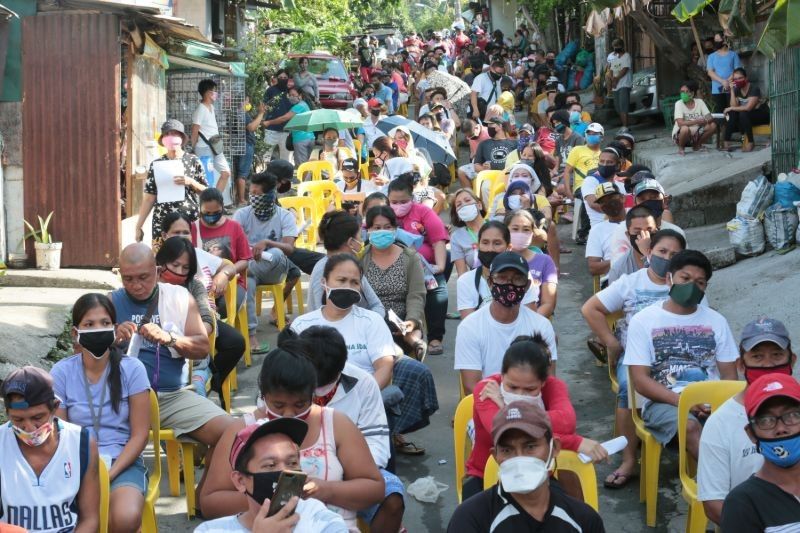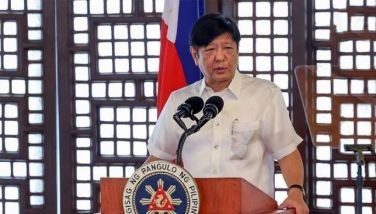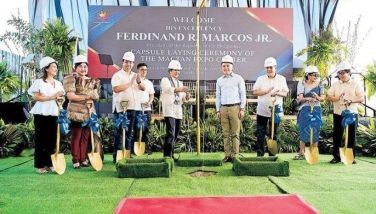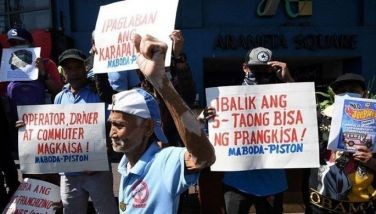House bill for smaller, more manageable barangays gets DILG and police support

MANILA, Philippines — A House lawmaker wants to amend the Local Government Code to limit the population of each barangay in all urban areas of the country to 15,000 citizens, a move he said will make functions like distributing aid easier.
Distribution of government relief has frequently seen delays at the local government level, with local governments still scrambling to get financial and material aid to constituents as the enhanced community quarantine in parts of the Philippines entered its ninth week.
Rep. Robert Ace Barbers (Surigao Del Norte) filed House Bill No. 6686 seeking to amend Section 386 of the Local Government Code, which stipulates the requirements of a barangay.
In an interview with DZBB, Barbers said in Filipino: “We can see in our experience right now that the handing out of aid went through how many extensions already. And besides that, a lot of people still had complaints."
As it stands, the current population requisite for creating a barangay in the Local Government Code reads:
A Barangay may be created out of a contiguous territory which has a population of at least two thousand (2,000) inhabitants as certified by the National Statistics Office except in cities and municipalities within Metro Manila and other metropolitan political subdivisions or in highly urbanized cities where such territory shall have a certified population of at least five thousand(5,000) inhabitants: Provided, That the creation thereof shall not reduce the population of the original Barangay or Barangays to less than the minimum requirement prescribed herein.
Although the law states the minimum population of a barangay, it does not specify a cap.
"This is why I propose that maybe it would be better for us to make the coverage of our barangays smaller and instruct our barangay officials, led by the captain, to ensure efficient implementation of programs from the national level," he added.
DILG, PNP backing
Speaking in an interview with Dobol B sa News TV, Interior Undersecretary Jonathan Malaya, who is also the department's spokesperson, backed the proposed legislation, saying that having a more manageable number of residents within a barangay could ensure that services are delivered with ease.
“We think Rep. Barber's proposal looks good. We have noticed that the barangays have not been uniform (in population),” Malaya said in Filipino.
“It is time for us to study the size of the barangay as proposed by Congressman Barbers,” he added.
Even the national police, which is under the Department of Interior and Local Government, backed the proposal.
“We firmly believe in the wisdom of local government autonomy and devolution of power as provided under the Local Government Code. Yet we also look with great optimism at better prospects for public safety and law enforcement under this proposed legislation,” Police Brig. Gen. Bernard Banac, PNP spokesperson, said in a statement issued Monday afternoon.
“The proposed measure also syncs well with modern policing systems aided by technology that factors geographical information and demographics with crime data as bases for [the] deployment of forces,” he added.
In an earlier statement sent to reporters, Police Lt. Gen. Guillermo Eleazar, who heads the Joint Task Force Corona Virus Shield (JTF CV Shield), said that should the shift to GCQ in some areas still under the enhanced quarantine take place, that would mean heightened police visibility.
JTF CV Shield has said that crime incidence has lowered since the declaration of enhanced community quarantine, though this would be harder to maintain should this status be graduated to general community quarantine with more people leaving their homes.
Social amelioration
The Department of Social Welfare and Development's social amelioration program is intended to assist sectors left sidelined and without income by the enhanced community quarantine.
Many families on the ground have said that they have not yet received aid, with the DSWD placing most of the blame on LGUs themselves.
President Rodrigo Duterte's reports to Congress on the usage of his emergency powers admit that while cash aid has generally been downloaded to many local government units around the country, they still have not trickled down to their target beneficiaries, over a month since the chief executive was handed special powers to address the pandemic.
Barangay officials blamed DSWD as the distribution should have started at 8am but up until 1pm no representatives from DSWD came to initiate distribution.
— Philstar.com (@PhilstarNews) May 10, 2020
????STAR/Michael Varcas pic.twitter.com/FOrzDiwXGE
READ: DSWD says LGUs 'responsible' if second tranche of aid delayed
Only 12% of local governments have accomplished the distribution of the first tranche of emergency aid as of April 30, his most recent report said.
In the chief executive's previous report, the Department of Social Welfare and Development also said it was looking for ways to speed up the release of subsidies.
- Latest
- Trending

































